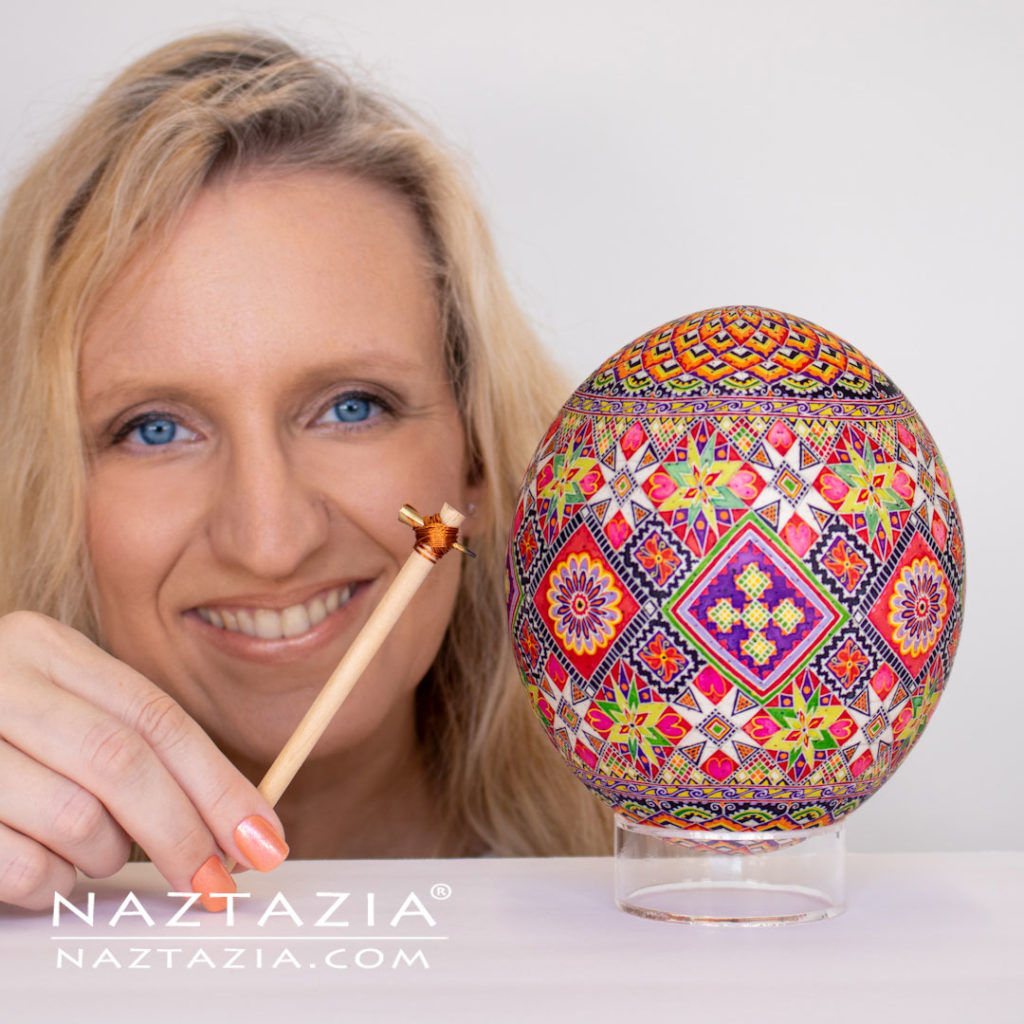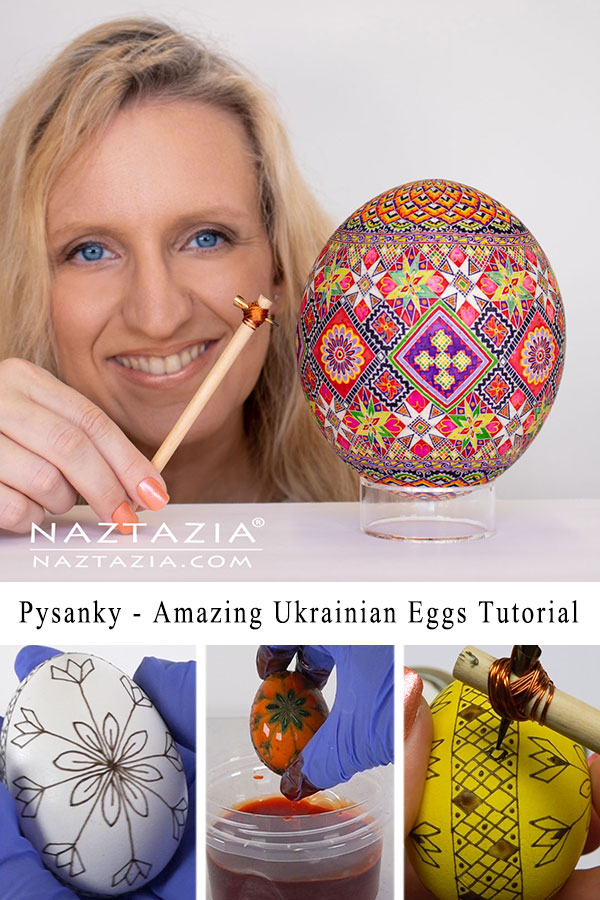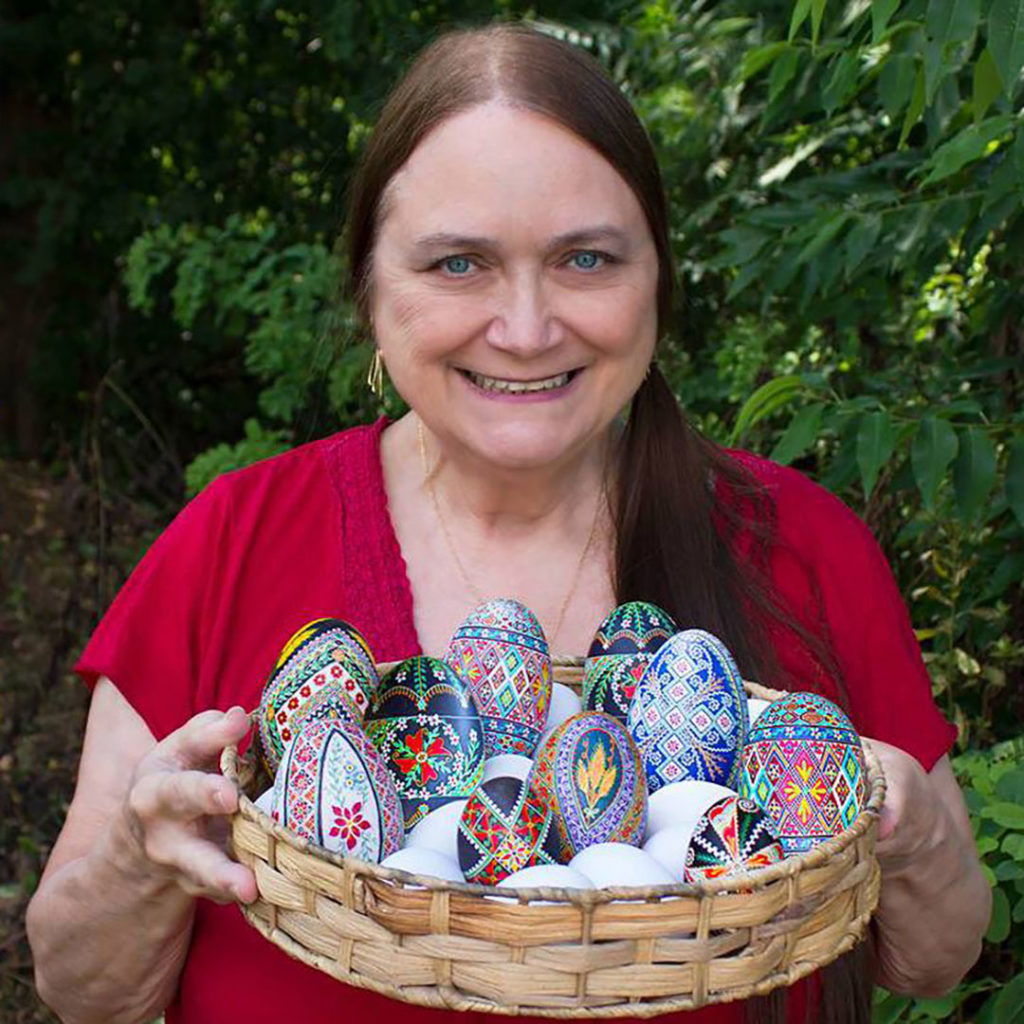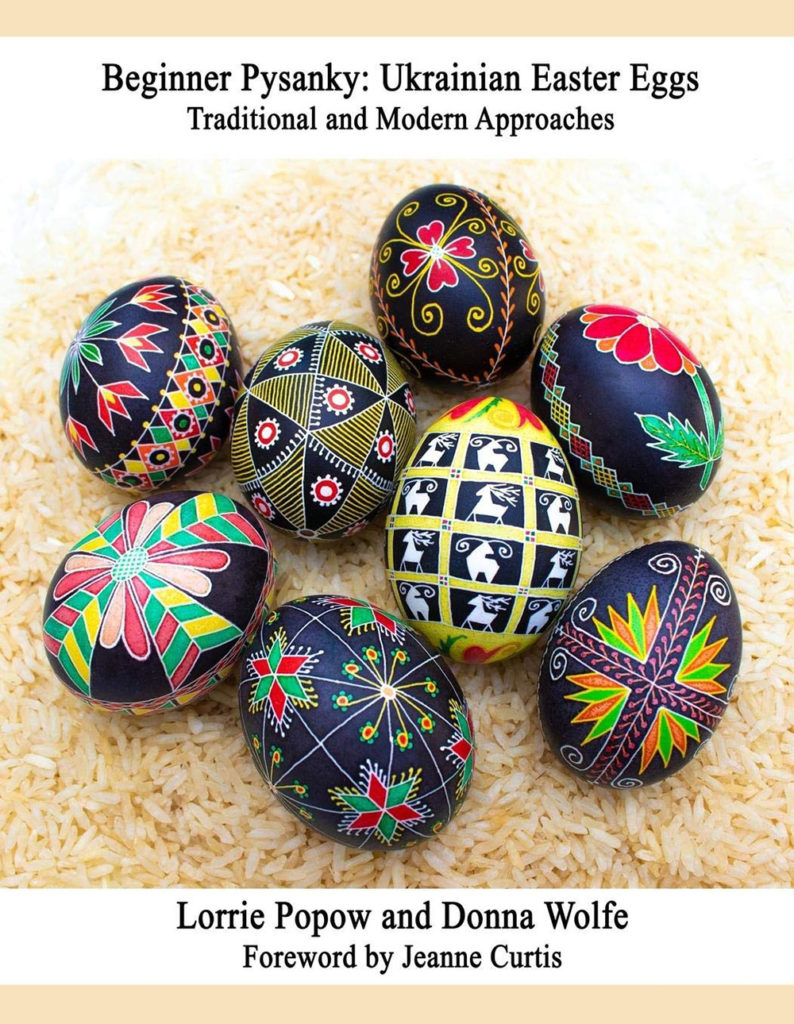Pysanky – Amazing Ukrainian Eggs – Easter Egg Art from Ukraine
What are Pysanky?
You may have heard the word “pysanky,” and wonder what is it? What does it mean? Pysanky is a Ukrainian word for eggs decorated with wax and dyes. A pysanka is created around spring time to celebrate life. The word “pysanky” is actually the plural version of the word “pysanka,” which is a Ukrainian word for a specific type of decorated egg. One decorated egg is called a pysanka, while many decorated eggs sitting in a bowl would be called pysanky. In Cyrillic, the alphabet used in Ukraine, pysanka is written писанка, while pysanky is written писанки.

History of Ukrainian Eggs
For generations, people in Ukraine decorated eggs with symbols using dyes and beeswax. During the pre-Christian days, Ukrainians decorated eggs to celebrate the springtime with its new life and rebirth. Symbols during this period represented health, happiness, love, harvest, fertility, etc.
After Ukrainians converted to Christianity, they continued with their egg art traditions. This time, people decorated their eggs for the blessing of the Pascha basket on Holy Saturday. Holy Saturday is the day before Easter Sunday. However, the very same symbols displayed on the eggs had new Christian meanings.


My History with Pysanky
I grew up with Ukrainian heritage. I’ve always associated a pysanka with just another thing you put in the Pascha basket once a year. My mom and dad had a huge wicker basket that they would fill with all of the necessary items. This of course, included pysanky. Other items include a smoked kielbasa ring, sliced ham, and a jar of horseradish (to suffice the “bitter herb” requirement). We also included a braided paska bread, and sometimes Ukrainian babka. Babka is a sweet bread or cake. Bakers use a tin can and sometimes place icing and sprinkles on top.
Also, one needed to include butter in the basket. We would prepare it in a lamb-shaped butter mold beforehand to make it look nice. Toss in some salt, red beets, cheese, and boiled eggs. We included a candle and covered everything with a rushnyk. A rushnyk is an embroidered white cloth with red/black Ukrainian designs. Once at the church, we’d light the candle, and uncover the basket. The priest would pray and splash holy water on everything, including each of us, while we sang sacred songs in Ukrainian.
Here’s a nice image (or two) to pin on your Pinterest boards.
Modern Day Pysanka
These days, pysanky have become more than just another item for the Holy Saturday basket. People from all backgrounds and heritages partake in creating these beautiful eggs all year ’round. These artists have elevated pysanky to a whole other level!

And this leads me to how I met Lorrie Popow, who is both my teacher and my good friend. You can find Lorrie’s website at lorriepopow.com Lorrie is an amazing artist and has earned not only the Master of Pysanky, but Master of Egg Art from the International Egg Art Guild (IEAG). Ironically, Lorrie’s husband Tom is of Ukrainian heritage and collects Native American artifacts, while Lorrie is of Cherokee heritage and writes pysanky!
Pysanka Book
Lorrie and I decided to write a beginner pysanky book. This book teaches you a bit of history about the art, then takes you step-by-step through the process of creating one of these beautiful eggs. First, you’ll learn what type of eggshell to choose. Some eggshells have minute cracks in them, which a flashlight can help find. Also, some eggs aren’t white. They instead have a blue or green tint to them. There are also different types of bird eggs you ca use, some as quail, duck, turkey, goose, rhea, even an ostrich egg.
Plus we show how to prepare supplies like dyes and beeswax. We don’t use typical food coloring dyes that you find in the grocery stores. Instead, we use commercial dyes that work well on fibers such as wool and silk.
Next, we discuss how to work with a kistka, which is a tool we use to write the symbols on the egg with beeswax. Speaking of the fiber arts, the ancient art form known as batik is very similar to how we create these eggs. To create batik fabric, artists apply beeswax with a tjanting. Then they dye the cloth. The areas are covered with beeswax will remain that color in the final design.
Finally, you’ll also learn how to preserve your finished pysanka with varnish so that it lasts for many decades. There are several varnishes and finishes you can use.
I definitely recommend our book for beginners to the art as well as those who need a refresher. Lots of full-color photos and diagrams help guide you through creating a lovely pysanka.

Please note I may receive compensation from the links below.
Now that you have become intrigued with the art form, you might wonder, where do I get the supplies needed to do this? I’ll provide several links to Amazon items below that will help get you started.
Granted Lorrie and I wrote the following book so of course we’re going to promote it. But it really is a great step-by-step, full-color book for beginners!
You can check out Lorrie’s other books HERE and another one HERE.
Both Lorrie and I have purchased many things through the years from Ukrainian Gift Shop. Their beginner kit on Amazon shown below comes with a kistka, 6 dyes, a block of wax, and an instruction booklet.
Both Lorrie and I really like WaxArtSupply for our supplies. Their Amazon kit contains 3 kistky, beeswax, 5 dyes, and an instruction booklet.
Soloveiko put together a very nice kit for Amazon. You’ll receive 10 dyes, a block of beeswax, 2 kistky, a candle, egg holder, and we just love those egg design templates!
And finally, the heating tool we use can be found below.
[embedyt] https://www.youtube.com/embed?listType=playlist&list=PL-Wznh_zZEy9VhQf21UF8UMnvqyhKHPUf&v=rrZ9Tc0I3EU[/embedyt]